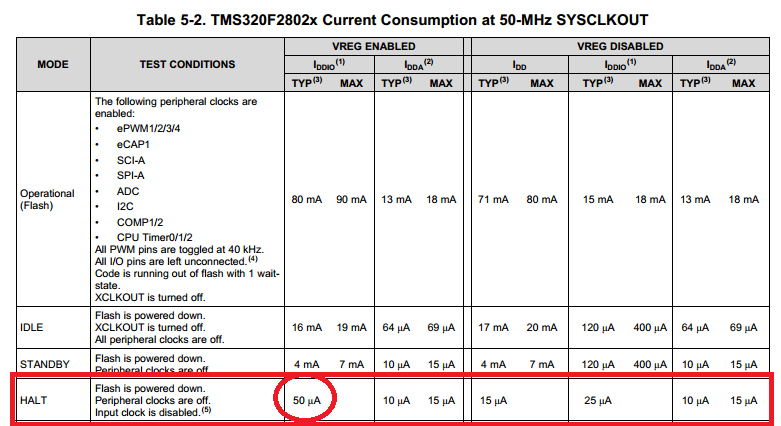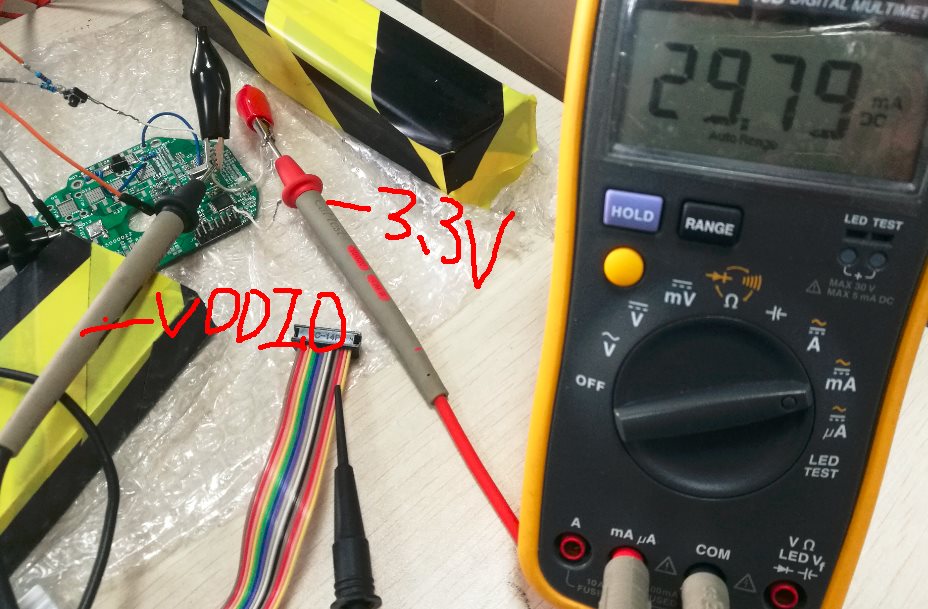Tool/software: Code Composer Studio
How much is the minimum Power Consumption of TMS320F28027F ? Download Example_F2802xHaltWake into the TMS320F28027F; the current measured is 5mA.
电源系统用的是TPS54061,该电源在24V供电下静态功耗在测得有256uA。(没有接任何负载)
The power supply system with TPS54061,Power in 24 V power supply, Current Consumption have 256uA.(there is No load)
The entire board welding with a minimum system, and a download the circuit. Runninng Example_F2802xHaltWake ,the Current Consumption is 5mA,and then wake up the Current Consumption is 10mA.
How much is the minimum Power Consumption of TMS320F28027F? Could I reduce it more?



